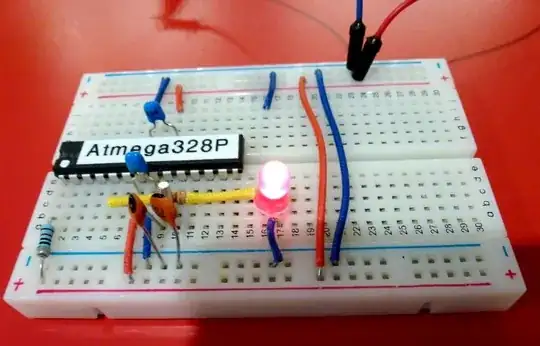Certainly there is.
// disable ADC
ADCSRA = 0;
You can disable lots of internal modules like this:
power_all_disable(); // turn off all modules
See my page about power saving.
Majenko commented that turning off the ADC, while leaving the processor running was pointless. The real way to save battery power is to sleep, and it is possible to do that and still keep track of the time.
On my page about timers there is code to use a 32.768 kHz clock crystal to sleep and wake every second, which you could then use to alter the display on your watch.
Code from that page:
#include <avr/sleep.h>
#include <avr/power.h>
const byte tick = 3;
// interrupt on Timer 2 compare "A" completion - does nothing
EMPTY_INTERRUPT (TIMER2_COMPA_vect);
void setup()
{
pinMode (tick, OUTPUT);
// clock input to timer 2 from XTAL1/XTAL2
ASSR = bit (AS2);
// set up timer 2 to count up to 32 * 1024 (32768)
TCCR2A = bit (WGM21); // CTC
TCCR2B = bit (CS20) | bit (CS21) | bit (CS22); // Prescaler of 1024
OCR2A = 31; // count to 32 (zero-relative)
// enable timer interrupts
TIMSK2 |= bit (OCIE2A);
// disable ADC
ADCSRA = 0;
// turn off everything we can
power_adc_disable ();
power_spi_disable();
power_twi_disable();
power_timer0_disable();
power_timer1_disable();
power_usart0_disable();
// full power-down doesn't respond to Timer 2
set_sleep_mode (SLEEP_MODE_PWR_SAVE);
// get ready ...
sleep_enable();
} // end of setup
void loop()
{
// turn off brown-out enable in software
MCUCR = bit (BODS) | bit (BODSE);
MCUCR = bit (BODS);
// sleep, finally!
sleep_cpu ();
// we awoke! pulse the clock hand
digitalWrite (tick, ! digitalRead (tick));
} // end of loop
Whilst asleep, the processor uses very little power. In the example sketch I measured 1.46 µA current consumption, when the output was LOW, if running from 5V power supply, and 1.1 µA if running from 3.3V power supply.
Example setup:

I have two decoupling capacitors (the blue ones). A pull-up resistor on Reset.
A 32.768 kHz crystal between pins 9 and 10. A 22 pF capacitor between each leg of the crystal and ground.
A current-limiting resistor and a LED. It works, and toggles at 1 Hz. When asleep (LED not on) it draws 1.46 µA as mentioned above.
